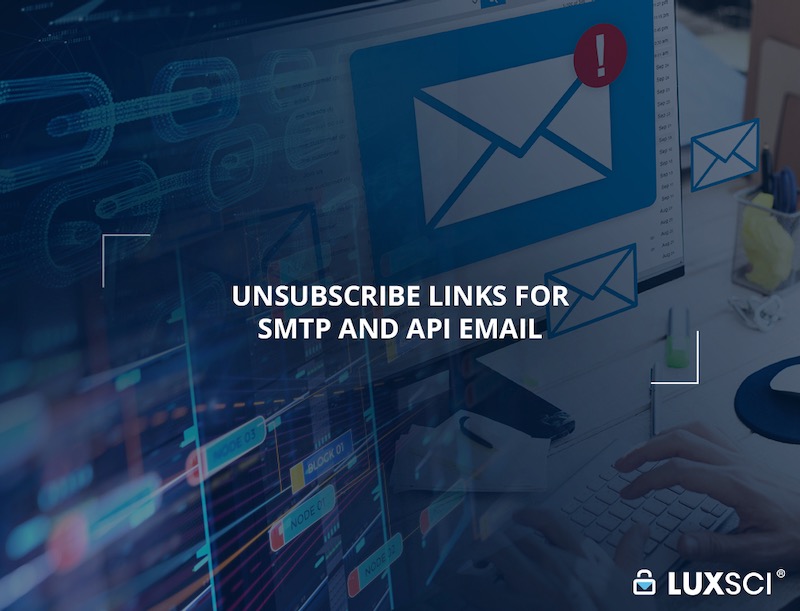Email List Hygiene: 5 Best Practices for Cleaning Up Email Lists
Tuesday, August 2nd, 2022When sending emails from a new server and IP address, we always stress the importance of warming up the server to prevent emails from being flagged as spam. One critical step of the warm up is sending small batches of messages to email contacts that are likely to open and click on the content. Sending to clean email lists helps build a positive IP reputation and will improve email deliverability over time. This article explains the basics of email list hygiene and how to clean up email lists.
What is Email List Hygiene?
Email list hygiene involves removing ineligible contacts from lists and adding new addresses with proper permissions and consent. Good email list hygiene contributes to good email deliverability and engagement. It also prevents emails from being marked as spam because all recipients have agreed to receive email communications. Here are our tips for cleaning up email lists:
How to Clean up Old Email Lists
1. Remove Role Accounts
We don’t recommend sending emails to addresses that are groups or aliases that support a specific business function. These include addresses like:
- info@domain.com
- support@domain.com
- scheduling@domain.com
- staff@domain.com
Spammers often scrape these addresses off websites and send them unsolicited emails. To successfully warm up a new IP, it is essential to differentiate sending patterns from spammers as much as possible.
2. Remove Inactive or Incorrect Email Addresses
Most mailing lists contain old email addresses that are no longer active. Removing these addresses before warming up a new mail server is essential. Spammers often purchase lists that contain a high proportion of inactive emails. Sending to many inactive addresses may cause the server to be flagged as spam. Also, check for and correct common misspellings and typos, for example, “gamil.com” vs. “gmail.com.”
If working with a large email list that hasn’t been contacted in a while, it may be worthwhile to use a paid tool to run these verification checks and remove bad email addresses.
3. Review Email Permissions
Before sending a campaign, review how the email list was collected. Sending unsolicited emails is an excellent way to be marked as spam. If marketing communications are planned, ensure the contacts have explicitly agreed to receive marketing messages. The CAN-SPAM Act regulates how marketers can use email to communicate with prospects. It’s essential to confirm that the list was not collected in a way that violates those terms. In addition, never send to a list purchased from a third party, as that violates the CAN-SPAM Act and can lead to massive financial penalties.
Sometimes, the origins of an email list may be unknown. In this case, running an opt-in or re-engagement campaign is a good idea. This gives users the opportunity to resubscribe to the mailing list and reengage with the brand. Only sending emails to people who have opted in increases the likelihood they will engage with future emails. Remove contacts from the list who do not respond or opt-out from future communications.
Ongoing Email List Hygiene
Setting up a schedule to maintain email list hygiene is crucial to preserving IP reputation. It takes ongoing work to support list hygiene. Including email list cleaning tasks in campaign set-up and performance reviews is essential to ensure campaigns are delivered to the recipients.
4. Remove Bounces, Spam, and Unsubscribes
After every campaign, remove addresses that have unsubscribed or bounced. Most email marketing tools will automatically remove unsubscribes but reviewing the feedback is essential. If many people unsubscribe even after list clean-up, review the email contents to ensure they are relevant and not spammy.
Likewise, even verified subscribers may report emails as spam instead of clicking on an unsubscribe link. We recommend removing contacts who have marked emails as spam because it is a clear indicator that they no longer want to receive these types of emails.
Continuing to email users who have unsubscribed is a CAN-SPAM violation with penalties in the thousands of dollars. Bounces are not usually removed automatically by email programs. Marketers should review the list of bounced emails after every campaign is sent and remove bounced addresses to keep the list clean. Lists acquired from spammers often contain many email addresses that will bounce, so avoiding sending to bounced addresses is recommended.
5. Set Up Double Opt-In for New Subscribers
Even if the original list was not collected according to best practices, setting up validation procedures for new subscribers can help ensure that only people who want to receive emails will get them.
The best way to validate email subscribers is by setting up a double opt-in process. By “double opt-in,” we mean that when someone signs up for an email list, they are sent another email requiring them to confirm the subscription by clicking on a link before being added to a list. This helps ensure that only people who want to receive brand communications will be added to the lists.
Conclusion
Cleaning up email lists can initially be time-consuming. Setting up the proper procedures and reviewing existing lists regularly can help maintain proper list hygiene and improve email deliverability.




 WESTWOOD, MA, May 31, 2013 — LuxSci® announces the recent launch of
WESTWOOD, MA, May 31, 2013 — LuxSci® announces the recent launch of 


